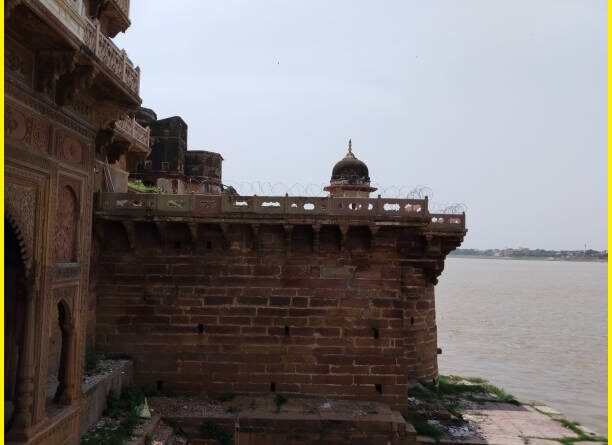Ramnagar Fort- A Historic Gem on the Banks of the Ganges
Ramnagar Fort
History of Ramnagar Fort
The construction of Ramnagar Fort Varanasi began in 1750 during the rule of Maharaja Balwant Singh, the ruler of the princely state of Kashi (Varanasi). The fort was intended to be a stronghold and a royal residence for the Maharajas of Varanasi. Maharaja Balwant Singh did not live to see the completion of the fort. It was his successor, Maharaja Chet Singh, who oversaw the completion of the fort’s construction in 1755. Maharaja Chet Singh further embellished and expanded the fort.

The fort is built in a fusion of Mughal and Indian architectural styles, featuring imposing walls, carved balconies, and ornate pavilions. The extensive use of Chunar sandstone contributes to the fort’s grandeur. The Fort served as the official residence of the Maharajas of Varanasi. The fort complex includes the main palace, courtyards, temples, and a museum. It stands as a testimony to the historical and cultural heritage of the region.
Also Read- Kashi Vishwanath Temple and Varanasi-A Holy City in India
Ramnagar Fort Museum
The Ramnagar Fort Museum, located within the Ramnagar Fort premises, is a cultural and historical repository that showcases the heritage of the region and the erstwhile rulers of Varanasi. The museum was established to preserve and exhibit the rich history, art, and culture of the region associated with the Maharajas of Varanasi.
The museum houses a diverse collection of artifacts that offer insights into the lifestyle, traditions, and history of the royal family of Varanasi. Some of the notable collections include-
Vintage Cars- The museum features a display of vintage cars that were once owned by the Maharajas.
Royal Costumes-Traditional costumes worn by the members of the royal family are showcased, reflecting the cultural richness of the region.
Arms and Armory- The museum displays a collection of arms and armory, providing a glimpse into the military history of the region.
Manuscripts and Artifacts- Various manuscripts, documents, and artifacts that highlight the cultural and historical significance of Varanasi.
The museum serves as a cultural hub, helping visitors understand the traditions, rituals, and festivals associated with the Maharajas of Varanasi. It provides a deeper appreciation for the cultural heritage of the region. The architecture of the museum is in harmony with the overall design of the Ramnagar Fort. The exhibits are housed in well-maintained galleries within the fort complex.




